Dry aging makes the difference between a good steak and an unforgettable steak.
Once an old-world process for preserving meat, dry aging in today’s world of convenience and shortcuts is a vanishing art—a labor-intensive process practiced by very few to achieve the epitome of flavor, tenderness, and juiciness.
The Lobels are among the few practitioners anywhere of old fashioned, dry-aging methods, in their own patented dry-aging lockers, for up to six weeks—longer than most beef purveyors.
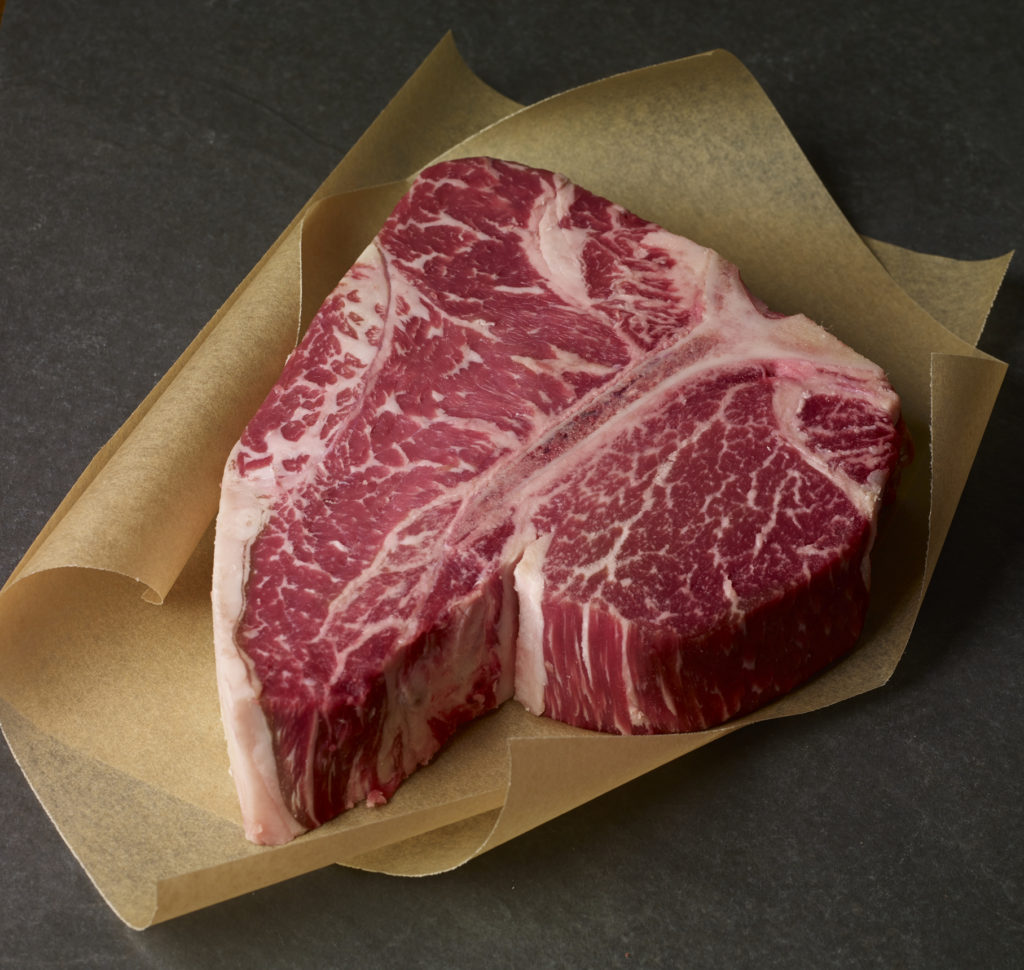
As an indication of quality, the length of dry aging is important to know. While beef that has been aged for a week or so can be called dry aged, there is a significant quality difference with beef that has been dry aged for up to 6 weeks, as is Lobel’s standard. If dry aging is done at all, 2 to 3 weeks is typical. However, such a short amount of time does not permit the full development of flavor and tenderness that dry aging for up to 6 weeks provides.
Dry aging beef takes place in a specially designed room that has controls for temperature, humidity, and air circulation. The process involves large, single muscle groups, known as primals. For example, the rib is the primal that yields rib steaks and roasts. A short loin is the primal that yields Porterhouse and T-bone steaks. Each primal must be of the highest quality, be on the bone, and have a significant fat cover.
Two important things happen to beef in the dry-aging room:
- Flavor concentration through evaporation.
Over the course of 6 weeks, Lobel’s dry-aged beef loses 25–30% of its inherent moisture. This evaporation concentrates the beefy flavor and imparts undertones of nuttiness and a buttery taste. That’s why a dry-aged piece of beef will be considerably smaller than a piece of beef that hasn’t been aged or one that has been aged and/or tenderized by other means.. - Ultimate tenderness.
While the primal is aging, naturally occurring enzymes break down the muscle fibers to reach the pinnacle of tenderness.
“Nothing the cook does to add flavor in the kitchen is a substitute for starting with properly aged meat,” according to fourth-generation master butcher Stanley Lobel. “After about three weeks of dry aging, beef reaches its peak tenderness. Beyond three weeks the flavor continues to develop into a deep, rich, beefy taste that fills your mouth.”
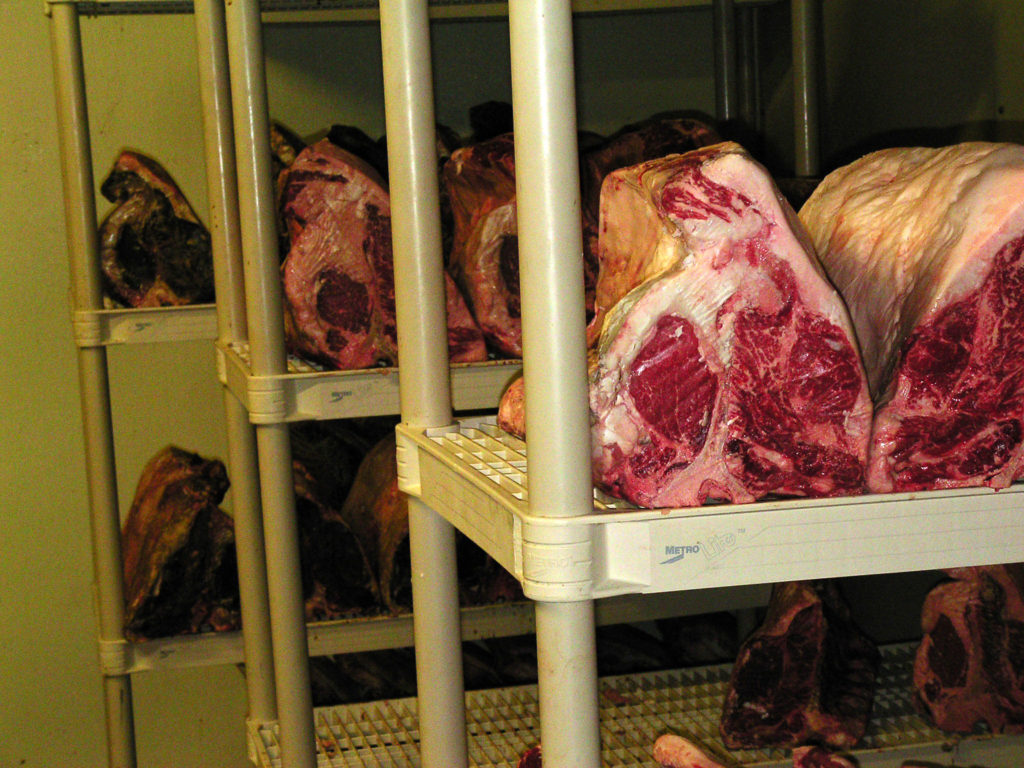
The Other Aging Process
Another method of aging beef is called wet aging. In this process, primals are placed in vacuum-sealed bags, and aged anywhere from 1 to several weeks.
“Compared to dry aging, wet aging helps tenderize the meat through the naturally occurring enzymes. However, because wet aging doesn’t dehydrate the beef, it does little in the way of improving and concentrating the flavor the way dry aging does,” Stanley explained.
Take a Peek Inside the Dry-Aging Room
The first step of dry aging is placing fresh primal on racks in the dry-aging room. Here, they will be rotated from rack to rack in the dry-aging room according to how long they’ve been aging.
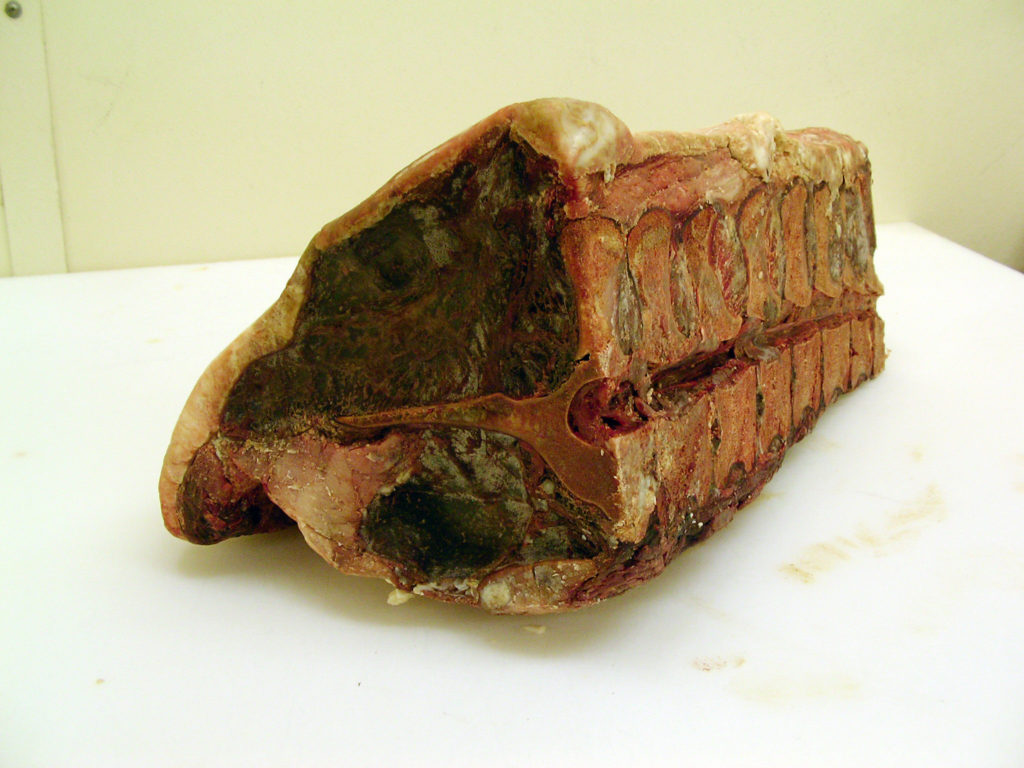
After 6 Weeks of Dry Aging
As the primal dry ages, a crust of molds and yeasts forms on the outer surface, acting as a cocoon to protect the beef within. Dry aging concentrates the meat’s fibers through dehydration and the meat becomes dense, yet meltingly tender. The exterior crust that forms during the process seals and protects the primal from deterioration and allows the meat’s enzymes to tenderize the meat naturally.
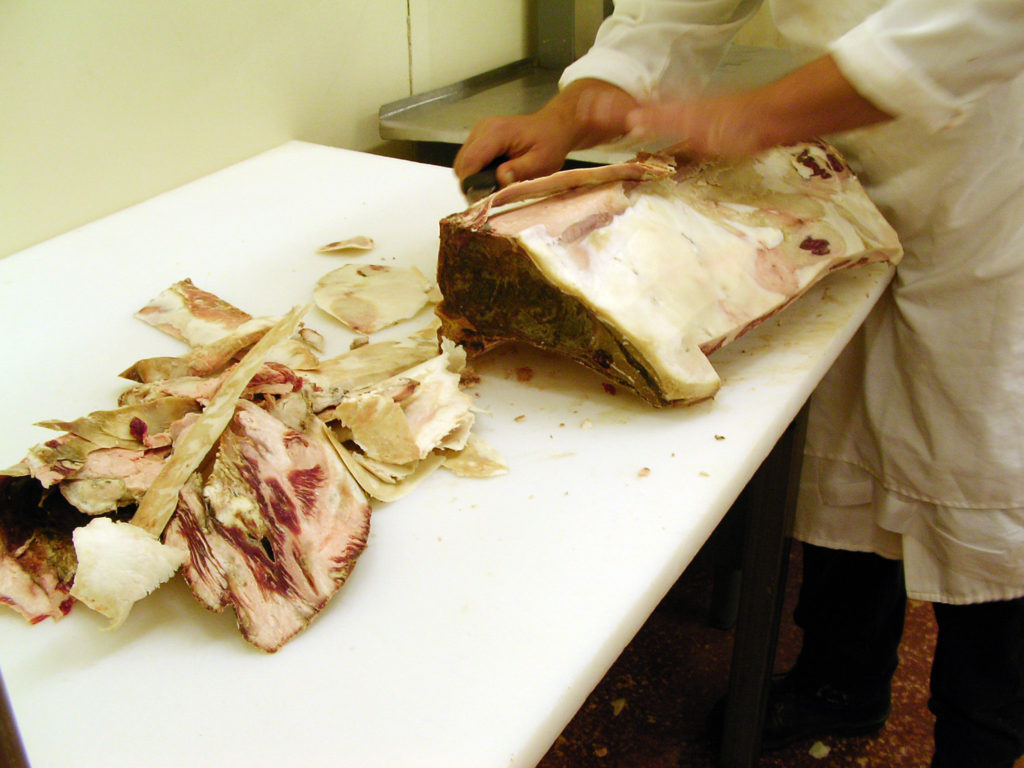
Trimming the Aged Primal
To reach the porterhouse within the short loin, the crust, some exterior fat, and bone are trimmed away.
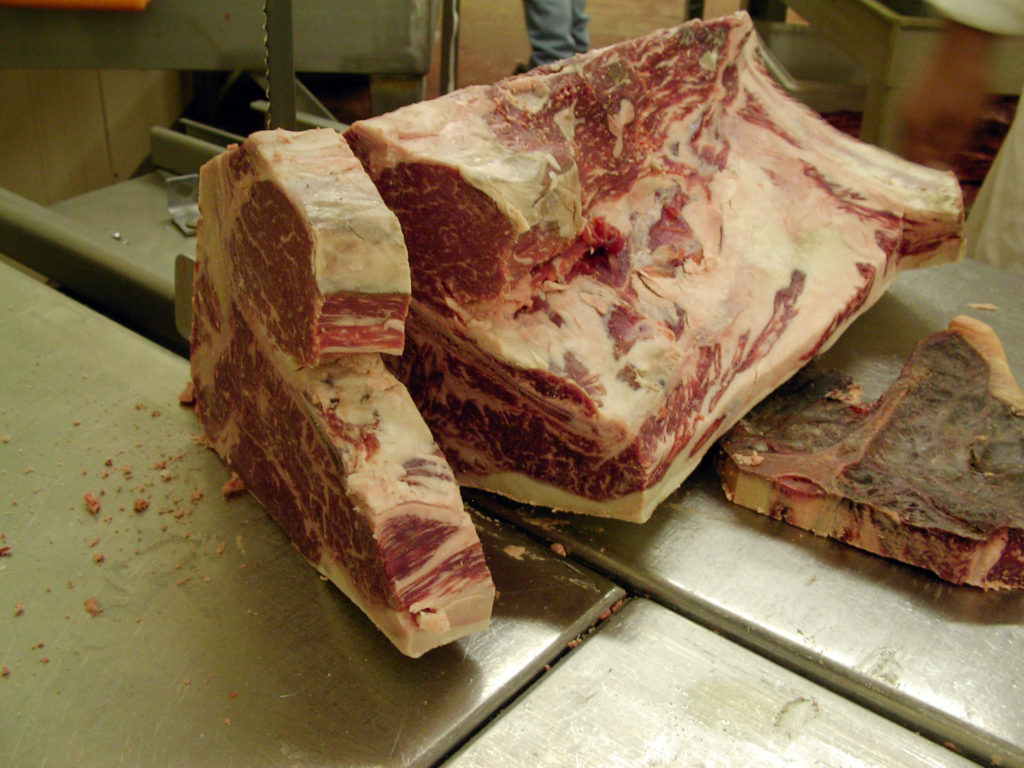
Cutting the Steak
Finally, the cherry-red flesh emerges from its crusty cocoon to become, in this case, a porterhouse steak.
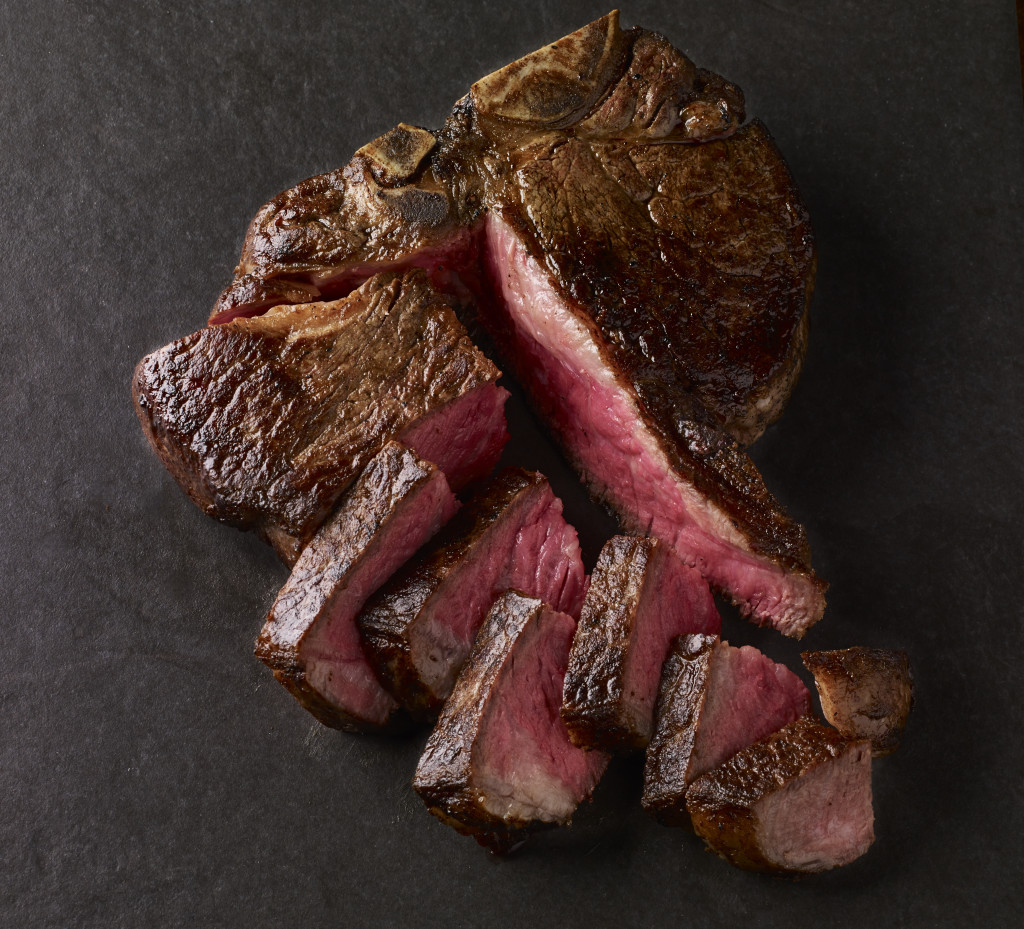
A Dry-Aged Masterpiece
After cooking and an appropriate respite before slicing, the filet and strip portions are sliced across the grain for serving.
Have you ever tasted a dry-aged steak? What flavor notes come to mind when tasting a dry-aged steak. What is your favorite dry-aged cut?



Leave Your Response